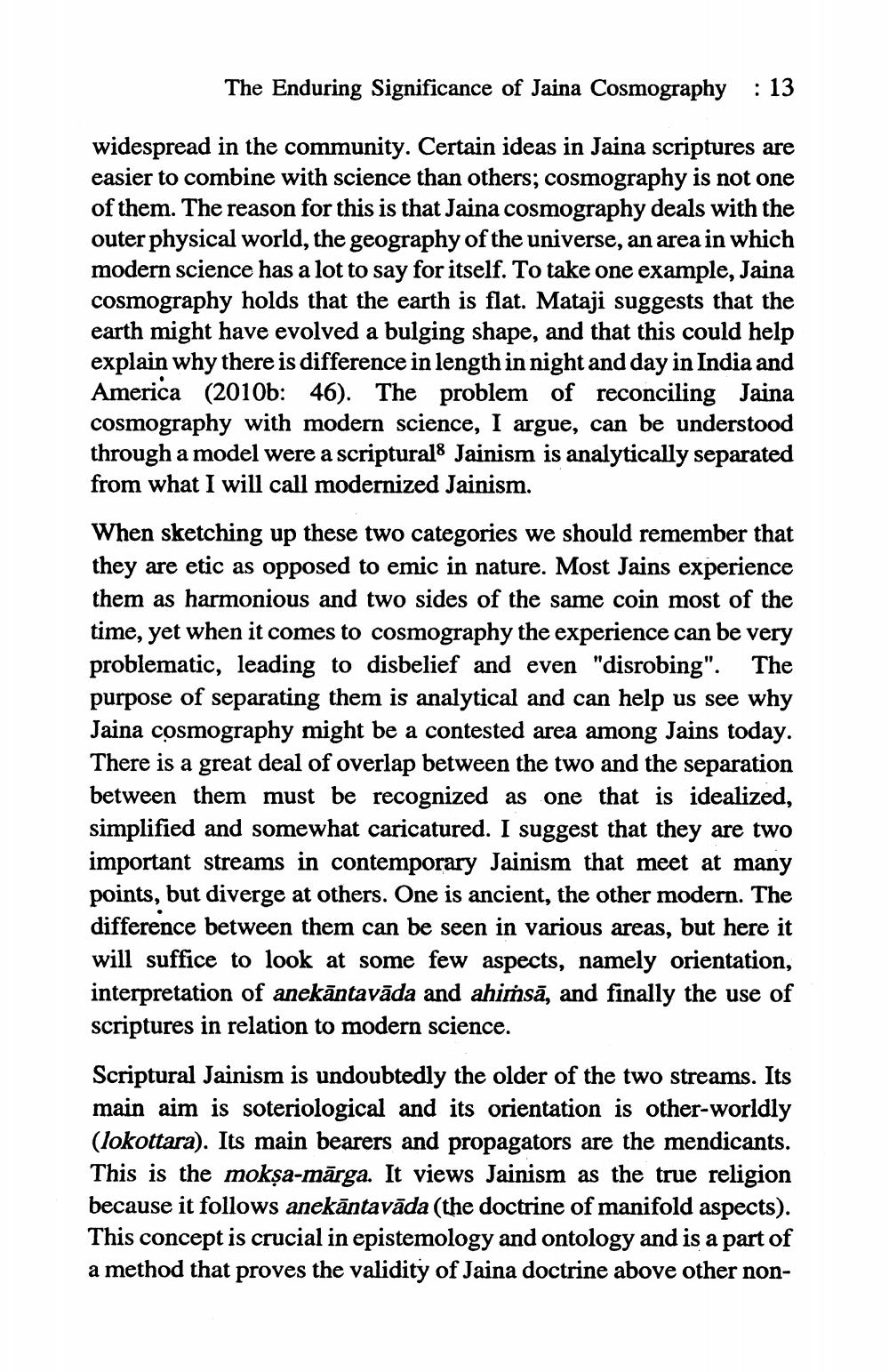________________
The Enduring Significance of Jaina Cosmography : 13
widespread in the community. Certain ideas in Jaina scriptures are easier to combine with science than others; cosmography is not one of them. The reason for this is that Jaina cosmography deals with the outer physical world, the geography of the universe, an area in which modern science has a lot to say for itself. To take one example, Jaina cosmography holds that the earth is flat. Mataji suggests that the earth might have evolved a bulging shape, and that this could help explain why there is difference in length in night and day in India and America (2010b: 46). The problem of reconciling Jaina cosmography with modern science, I argue, can be understood through a model were a scripturall Jainism is analytically separated from what I will call modernized Jainism.
When sketching up these two categories we should remember that they are etic as opposed to emic in nature. Most Jains experience them as harmonious and two sides of the same coin most of the time, yet when it comes to cosmography the experience can be very problematic, leading to disbelief and even "disrobing". The purpose of separating them is analytical and can help us see why Jaina cosmography might be a contested area among Jains today. There is a great deal of overlap between the two and the separation between them must be recognized as one that is idealized, simplified and somewhat caricatured. I suggest that they are two important streams in contemporary Jainism that meet at many points, but diverge at others. One is ancient, the other modern. The difference between them can be seen in various areas, but here it will suffice to look at some few aspects, namely orientation, interpretation of anekāntavāda and ahiṁsā, and finally the use of scriptures in relation to modern science. Scriptural Jainism is undoubtedly the older of the two streams. Its main aim is soteriological and its orientation is other-worldly (lokottara). Its main bearers and propagators are the mendicants. This is the mokşa-mārga. It views Jainism as the true religion because it follows anekāntavāda (the doctrine of manifold aspects). This concept is crucial in epistemology and ontology and is a part of a method that proves the validity of Jaina doctrine above other non




